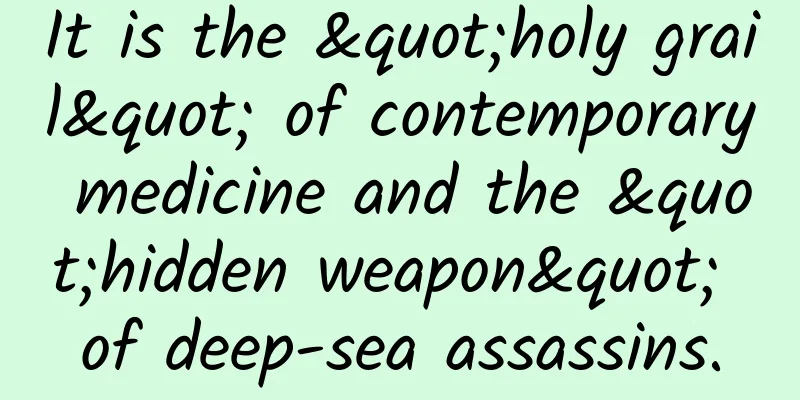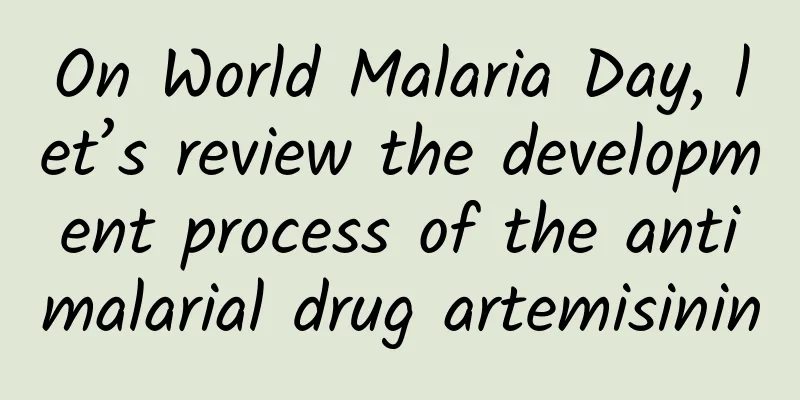It is the "holy grail" of contemporary medicine and the "hidden weapon" of deep-sea assassins.

|
The winning works of the 2023 "China Science Popularization Star Creation Competition" Author: Guo Kai and Li Yuan In the vast ocean, there is a sect that lives on the seabed all year round, rarely goes out, and is famous for its use of "poisonous hidden weapons" - the Cone Snail Sect. The members of this sect hide during the day and come out at night. They are good at camouflage and often hide in the sand on the seabed. When they encounter an enemy, they suddenly shoot "poison darts" - poison needles with cone snail toxins, which paralyze the opponent's body and make him surrender. The Cone Snail Sect's moves are hidden and vicious, and people in the underworld are terrified. Various members of the cone snail family. Source: Reference [1] There are many experts in the cone snail school, including masters of making poisons. Among them, the hidden weapons used by the ground cone snail are unique. The ground cone snail fights against fish that swim fast in the water. The hidden weapons it releases can quickly paralyze the opponent from a long distance, and then kill him with a poison dart. It is really a ruthless character who "kills a fish every ten steps and leaves no trace in a thousand miles." Interestingly, this unique secret weapon is actually a class of drugs we are all familiar with - insulin. Conus geochelone hunting fish. Source: Nature Chemical Biology[2] This hidden weapon has aroused great interest among human scientists: What kind of animal insulin is this, and how powerful is its poison? Scientists extracted and identified this insulin, Con-Ins G1, from the venom secreted by Conus geodesica. In order to verify the power of Con-Ins G1, they injected Con-Ins G1 into healthy zebrafish and analyzed the blood sugar levels of zebrafish. The results showed that the blood sugar of zebrafish dropped rapidly. When they released Con-Ins G1 into the water environment around zebrafish, the zebrafish that were just jumping around quickly became listless and stopped moving. Testing zebrafish with Conus geois insulin Con-Ins G1. Image source: Nature Chemical Biology[2] Interestingly, through research, scientists have discovered that among the cone snail faction, some members are good at catching worms and mollusks, and some are good at fishing. Only the Con-Ins G1 of the fish-hunting cone snail is closest to the fish insulin protein sequence, and also has many similarities with the human insulin protein sequence. This makes scientists even more fascinated: the insulin family, as the "holy grail" of diabetes treatment drugs, is actually the unique secret weapon of the underwater hunters. This is unexpected, but reasonable. Insulin is a classic double-edged sword drug. This unique effect can even be traced back to a hundred years ago, when insulin was first discovered. In 1922, a team led by Canadian surgeon Banting and pharmacologist MacLeod extracted insulin with hypoglycemic effects from bovine pancreas. However, the insulin they extracted early had many impurities, unstable efficacy, and toxic side effects such as purulent infection. After biochemist Cripp joined, the situation improved rapidly. Cripp figured out the process technology for insulin purification and obtained insulin with high purity and stable efficacy. This has brought revolutionary changes to diabetes treatment. However, at this stage, Cripp discovered during animal experiments on rabbits that excessive doses of insulin and inappropriate use of time would lead to dangerous hypoglycemia, which could cause paralysis and convulsions at the mildest, shock and death at the worst. This was later called "insulin shock." Therefore, in order to prevent this from happening, nurses at the time had to prepare a glass of high-sugar orange juice while giving insulin injections to diabetics in case of an emergency. In the 1920s, when insulin was just being used clinically, an Agatha Christie novel-like event had already occurred: someone used insulin to commit murder. Banting (left) and Cripp (right), two important members of the insulin research and development team. Image source: References [3][4] So, why is Con-Ins G1, the poisonous weapon of Conus geophyllus, so popular among scientists? It turns out that, structurally speaking, insulin is a protein composed of two chains, A and B. Each chain contains a variety of amino acids. When these amino acids are connected into long chains, they are called amino acid residues, and the long chains connected are called polypeptide chains. Scientists have found that compared with human insulin, the polypeptide chain B chain of Conus geophyllus lacks a C-terminal sequence. According to common sense, such a deficiency will lead to a significant decrease in the ability of insulin to bind to the receptor protein that acts on insulin in the body, similar to a broken key that cannot open the corresponding lock. However, such a situation did not occur in the experiment of Con-Ins G1 and receptor protein, and Con-Ins G1 did not show the situation of 2 to 8 insulin monomers gathering in the blood. The latter is also called insulin oligomerization, which will affect the efficacy of insulin in lowering blood sugar, and it is also a treatment defect that scientists have always wanted to overcome in insulin treatment. To this end, scientists have developed many insulin homologues in their research, but have never found an ideal drug that can overcome insulin oligomerization and does not affect the binding of insulin to receptor proteins. The discovery of Con-Ins G1 gave scientists great inspiration. Through sequence comparison, scientists found that Con-Ins G1 had several unique amino acid residues changed in the sequence. Based on this information, they designed a new insulin homologue, mini-Ins G1, which worked well in experiments and seemed to show a new insulin action signal transduction pathway. Comparison analysis of insulin sequences from cone snails, zebrafish, and humans. Source: Nature Chemical Biology[2] What scientists are even more excited about is that the cone snail school, which is good at using poison, has a large lineup and many disciples, and all the poisonous hidden weapons far exceed human imagination. Scientists estimate that the cone snails that have been studied so far only account for 1% of the total number of cone snail schools (Conoideae) and 10% of the total number of cone snail branches (cone snail species). These poisonous hidden weapons are expected to become an important treasure trove of resources for drug research and development and benefit human health. Systematic classification and distribution of some cone snail species. Image source: Nature Chemical Biology[2] References: 2. Laugesen, Sophie Heiden et al. “Unconventional insulins from predators and pathogens.” Nature chemical biology vol. 18,7 (2022): 688-697. doi:10.1038/s41589-022-01068-6. 3. Great Success and Loss: Banting and Insulin, author: Zhu Shisheng, New Star Press. 4. Glory and Shadow: Legends, Disputes and Historical Drifts Behind the Discovery of Insulin, NetEase, https://www.sohu.com/a/238079162_456026. |
<<: Even if humans make mistakes, AI Agent can learn quickly!
>>: Simple and practical! The linear iteration method created by three Germans surpassed an era
Recommend
11 marketing techniques preferred by top marketers, each one is a killer!
Many years ago, Shi Yuzhu, the legendary marketer...
Momo's new growth point and monetization rules
In the past ten years, Momo has still not been ab...
Download the Baidu Cloud version of the high-end marketing logic: the quick transaction path
A brief introduction to the fast closing path res...
How to attract traffic on Weibo, 5 tips on how to attract traffic (effective)
Traffic is actually not difficult, especially gen...
24-hour emergency response | All four missing investigators in Ailao Mountain, Yunnan have died
Hot News TOP NEWS The four missing investigators ...
Mine, a simple yet effective naval weapon, how has it kept pace with the times?
The mine is an old naval weapon, but it is simple...
How to write a good title? All the tricks for a “100,000+” title!
As we all know, the number of readers of public a...
What wearables are worth looking forward to at MWC 2015?
The 2015 Mobile World Congress (MWC 2015) will ki...
Dai Xu's resume: What are the benefits of search engine optimization? Is enterprise SEO necessary?
There are many benefits to enterprise SEO optimiz...
WeChat iOS invites developers to participate in the 8.0.14 beta update: Mini Program cover advertising issues fixed, etc.
[[423112]] September 10 news: Thanks to IT Home n...
Hu Q&A丨The more foam a laundry detergent produces, the stronger its cleaning ability?
When I was little, I often asked to help my mothe...
Tips for remote work: Have you got the "hardcore" functions of WeChat for Business?
At the beginning of 2020, an unexpected epidemic ...
No wonder I always hear people in the community recycling old mobile phones at a “high price”
Recently, I often hear that people in the communi...
A long report on artificial intelligence: 15,000 words to tell you where the problems with artificial intelligence lie
Preface Artificial Intelligence (AI) is a collect...
Why do humans like to pick their feet?
What do the guys who pick their toes around you l...









